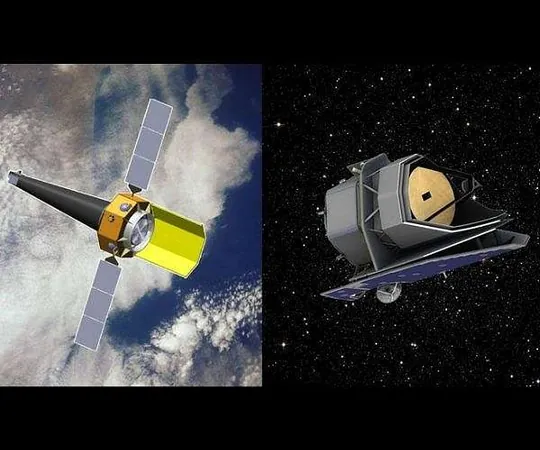
McGill Professor Spearheads AXIS Mission in NASA's $1 Billion Space Probe Race!
2024-11-29
Author: Jacob
Introduction
In an exciting update from Los Angeles, CA, NASA has propelled the Advanced X-ray Imaging Satellite (AXIS) mission, co-led by McGill University’s esteemed Professor Daryl Haggard, into the final stages of its highly competitive space probe selection process.
Mission Goals
The AXIS mission aims to unveil the mysteries surrounding primordial black holes from the universe's infancy, exploring their formation and profound impact on galaxy evolution. In addition to probing black holes, the mission will focus on explosive astrophysical events, such as stellar collapses and mergers, and will assess the characteristics of stars in nearby star systems to determine potential habitability for future exploration. Professor Haggard emphasizes that this mission opens doors to groundbreaking discussions in fundamental astrophysics, stating, “This mission presents a unique opportunity to delve into fundamental astrophysical questions.
Funding and Technology
As one of only two concepts advancing under NASA's Probe Explorers program—dedicated to X-ray and far-infrared astronomy—the AXIS mission emphasizes the importance of cutting-edge technology in modern astrophysical research. The mission team will receive a substantial funding boost of $5 million to refine their proposal over the next year, with Haggard's deep knowledge in black holes and multi-messenger astrophysics pivotal for outlining the mission's scientific goals.
Haggard's Role
In his dual role as co-chair of the AXIS Time-Domain and Multi-Messenger Science Working Group, Haggard is set to lead efforts in detecting electromagnetic signals from remarkable cosmic occurrences, including binary neutron star mergers, fast radio bursts, and fast X-ray transients. This research is vital in charting the universe's history and unraveling the enigmatic nature of black holes.
Future Prospects
NASA has slated 2026 as the year to announce the final mission selection. If AXIS secures the coveted spot, the team will commit to pioneering advanced X-ray imaging technologies designed to capture emissions from celestial phenomena like black holes and supernovae. With a projected launch in 2032, the AXIS mission is expected to dramatically enhance observational sensitivity beyond what is currently achievable with NASA's Chandra X-ray Observatory, potentially reshaping our understanding of high-energy astrophysical processes and the intricate dance of galaxy formation.
Conclusion
Stay tuned as NASA endeavors to reach new heights in astrophysical exploration, with the AXIS mission positioning itself as a key player in uncovering the universe's most profound secrets!









 Brasil (PT)
Brasil (PT)
 Canada (EN)
Canada (EN)
 Chile (ES)
Chile (ES)
 España (ES)
España (ES)
 France (FR)
France (FR)
 Hong Kong (EN)
Hong Kong (EN)
 Italia (IT)
Italia (IT)
 日本 (JA)
日本 (JA)
 Magyarország (HU)
Magyarország (HU)
 Norge (NO)
Norge (NO)
 Polska (PL)
Polska (PL)
 Schweiz (DE)
Schweiz (DE)
 Singapore (EN)
Singapore (EN)
 Sverige (SV)
Sverige (SV)
 Suomi (FI)
Suomi (FI)
 Türkiye (TR)
Türkiye (TR)